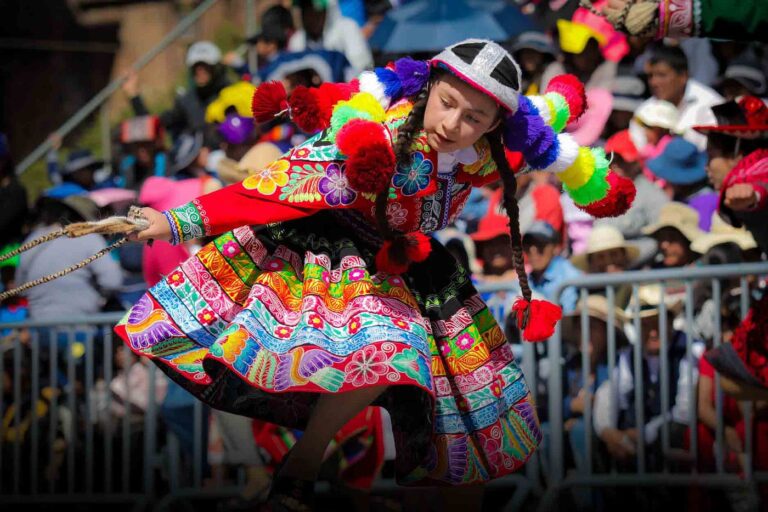Peru, a land wealthy with history and lifestyle, boasts a multitude of traditional practices that bind its groups and rejoice its diverse background. Among those, tiñan stands proud as a completely unique and captivating lifestyle. Steeped in records and cultural significance, tiñan displays the vibrant spirit of the Peruvian human beings and offers a window into their ancestral customs.
What is Tiñan?
Tiñan is a conventional practice that originates from the Andean regions of Peru. The word itself is rooted inside the Quechua language, that is spoken by using the indigenous people of the Andes. Although tiñan can range in its expression across distinct groups, it normally refers to a form of communal effort and party, wherein humans come together to obtain a common intention. This can contain responsibilities which include harvesting crops, constructing homes, or even accomplishing social and cultural festivities.
The essence of tiñan lies in its communal spirit and the collaborative efforts of the contributors. It is a practice that emphasizes the fee of operating together, sharing sources, and assisting one another, fostering a feel of solidarity and mutual appreciate within the network.
Historical Roots and Evolution
The origins of tiñan may be traced lower back to the pre-Columbian era, while the Inca civilization dominated the Andean region. The Incas, acknowledged for his or her advanced agricultural strategies and societal corporation, relied heavily on communal labor systems known as ayni and minka. These systems had been crucial in keeping the empire’s infrastructure and ensuring the properly-being of its humans.
Tiñan developed from these historic practices, adapting to the changing social and monetary conditions over the centuries. During the colonial length, Spanish influences reshaped many factors of Andean lifestyles, but the center principles of communal exertions and reciprocity continued. Today, tiñan continues to thrive, albeit in present day bureaucracy that mirror contemporary needs and realities.
The Role of Tiñan in Modern Peruvian Society
In current Peruvian society, tiñan manifests in numerous methods. One of the most prominent examples is in agriculture, in which communities acquire to work on planting or harvesting vegetation. This now not best guarantees that the hard work-in depth responsibilities are finished successfully however additionally reinforces social bonds and collective identification.
Beyond agriculture, tiñan performs a considerable position in social and cultural events. Festivals, religious ceremonies, and community gatherings frequently involve factors of tiñan, where human beings make contributions their time, abilties, and assets to make the occasion a hit. This communal attempt is not most effective practical however also imbues the event with a deeper experience of meaning and connection.
In city settings, tiñan has found new expressions. Community carrier projects, community smooth-ups, and neighborhood development tasks frequently draw on the ideas of tiñan, bringing people together to enhance their environment and guide one another.
The Cultural Significance of Tiñan
The cultural significance of tiñan extends past its practical applications. It embodies core values which can be deeply ingrained in Peruvian society, inclusive of cohesion, cooperation, and reciprocity. These values are mainly vital in a rustic marked by using various ethnic groups and a wide range of socio-economic backgrounds.
Tiñan serves as a reminder of the importance of network and the electricity of collective motion. It fosters a feel of belonging and shared cause, encouraging individuals to make contributions to the more right and help their neighbors. In this way, tiñan enables to strengthen social concord and sell a subculture of mutual respect and understanding.
Tiñan in Festive Celebrations
One of the most colourful expressions of tiñan is visible during Peru’s numerous fairs. These celebrations, which regularly have roots in each indigenous and colonial traditions, are marked by way of colorful processions, conventional tune, and intricate dances.
During those activities, tiñan is evident inside the way groups come collectively to organize and take part in the festivities. From the guidance of food to the creation of costumes and decorations, every factor of the party includes collective attempt and cooperation. This not best ensures that the competition runs easily however additionally reinforces the bonds of community and shared historical past.
Challenges and the Future of Tiñan
While tiñan stays a vital part of Peruvian subculture, it faces challenges within the modern-day world. Urbanization, migration, and the impact of globalization have converted traditional approaches of lifestyles, main to changes in how tiñan is practiced and perceived. In many instances, more youthful generations may be less familiar with those customs or view them as much less relevant to their cutting-edge life.
However, there are efforts to preserve and revitalize tiñan. Cultural companies, nearby communities, and educational institutions are working to elevate awareness about the significance of tiñan and encourage its exercise in each traditional and new bureaucracy. These initiatives spotlight the enduring cost of tiñan as a cultural asset and a source of network electricity.
Conclusion: The Timeless Spirit of Tiñan
Tiñan is extra than just a conventional exercise; it is a reflection of the long-lasting spirit of the Peruvian human beings. It embodies values that are critical to the cloth of society, selling cooperation, solidarity, and mutual support.
As Peru keeps to conform and adapt to the needs of the current international, tiñan remains a critical hyperlink to the beyond and a source of inspiration for the future. It reminds us of the power of community and the importance of running together to achieve not unusual goals. In a world that regularly emphasizes individualism, tiñan offers a fresh angle on the cost of collective attempt and the energy that comes from cohesion.


